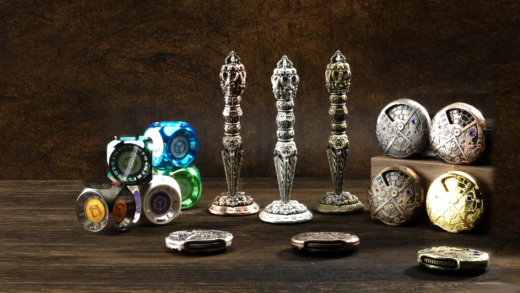This article covers how to successfully organize a Chinese auction, including engaging your audience with fun activities, determining starting bids for items, avoiding common mistakes, and involving the community for better participation. These strategies ensure a memorable and effective auction experience.
What is a Chinese Auction: Understanding the Basics
A Chinese auction is an engaging fundraising event where participants bid on items using tickets instead of cash. This unique auction format allows attendees to purchase tickets, which they can then use to place bids on items they desire. The excitement builds as participants try to outbid each other, making it a fun and competitive atmosphere.
Key features of a Chinese auction include:
- Tickets: Attendees buy tickets that they can use to bid on items.
- Variety of Items: A range of items, from donated goods to unique experiences, are available for bidding.
- Engagement: The interactive nature of the auction keeps participants engaged and excited.
Overall, a Chinese auction is an effective way to raise funds while providing entertainment for participants.
How Does a Chinese Auction Work: The Mechanics Explained
Understanding the mechanics of a Chinese auction is crucial for a successful event. The process typically unfolds as follows:
- Preparation: Organizers collect items for auction and decide on ticket pricing.
- Ticket Sales: Participants purchase tickets before the auction starts.
- Bidding: Attendees place tickets in containers corresponding to the items they wish to bid on.
- Drawing: Winning bids are drawn from the containers at the end of the auction.
This system creates an element of surprise, as participants do not know who will win until the drawing occurs. It also allows for a more extensive range of items to be auctioned off, making the event more exciting.
Key Elements for Organizing a Chinese Auction: What You Need
To ensure a successful Chinese auction, several key elements need to be in place:
- Location: A spacious venue to accommodate attendees and display items.
- Items for Auction: A diverse selection of appealing items to attract bidders.
- Ticket System: An organized method for selling and distributing tickets.
- Promotion: Effective marketing strategies to spread the word about the event.
- Volunteers: A team to help manage the event and assist participants.
By focusing on these elements, organizers can create a memorable and successful Chinese auction that meets fundraising goals while entertaining the community.
Choosing Items for a Chinese Auction: What Works Best?
When organizing a Chinese auction, selecting the right items can significantly influence the event’s success. The key is to choose a variety of appealing items that attract bidders. Here are some effective strategies for choosing items:
- Unique Experiences: Consider offering experiences like cooking classes, spa days, or concert tickets. These items often draw more interest than typical physical goods.
- Popular Goods: Items that are in high demand, such as electronics, gift cards, or trendy gadgets, tend to attract more bidders.
- Donated Items: Reach out to local businesses for donations. This not only provides items but also engages the community and promotes local support.
- Themed Baskets: Create baskets around specific themes, such as movie night or gourmet cooking. This adds variety and can appeal to different interests.
- Quality Over Quantity: It’s better to have fewer high-quality items than many low-quality ones. Ensure that every item is desirable and in good condition.
By carefully selecting items that cater to your audience’s preferences, you can enhance participation and excitement at your Chinese auction.
Promoting Your Chinese Auction: Best Strategies
Effective promotion is crucial for a successful Chinese auction. Here are some strategies to maximize your outreach:
- Social Media: Use platforms like Facebook, Instagram, and Twitter to create buzz. Share sneak peeks of auction items to generate interest.
- Email Campaigns: Send out newsletters to your community. Include event details, item highlights, and a call to action for ticket purchases.
- Community Partnerships: Collaborate with local businesses and organizations to promote the event. They can help spread the word through their networks.
- Posters and Flyers: Distribute eye-catching materials in high-traffic areas. Ensure they include essential details like the date, time, and how to participate.
- Incentives: Consider offering early bird ticket discounts or special bonuses for group purchases to encourage participation.
By utilizing these promotional strategies, you can increase attendance and engagement, ensuring your Chinese auction is a hit.
Setting Up a Bidding System: Tips for Smooth Operations
A well-organized bidding system is essential for a successful Chinese auction. Here are some tips to ensure smooth operations:
- Ticket Allocation: Clearly define how many tickets each participant can buy and for what price. This helps manage expectations and keeps the system fair.
- Container Setup: Provide clearly labeled containers for each auction item. This ensures participants know where to place their tickets.
- Monitoring Bids: Have volunteers available to assist bidders and monitor the containers. This helps prevent any confusion during the bidding process.
- Clear Instructions: Before the auction starts, explain the bidding process to all participants. This clarity will help avoid misunderstandings during the event.
- Drawing System: Decide on a fair method for drawing winning tickets. Whether it’s random or based on the highest bids, ensure transparency in the process.
Implementing these tips will help create an organized and enjoyable bidding experience for everyone involved in your Chinese auction.
Tips for Engaging Your Audience: Make it Fun!
Engaging your audience is key to a successful Chinese auction. Here are some fun ideas to keep participants excited:
- Themed Events: Consider a theme for your auction that resonates with your community, like a holiday or local tradition. This adds an extra layer of fun and encourages attendees to dress up.
- Interactive Elements: Incorporate games or contests during the auction. For example, you could have a trivia quiz related to the items up for bid, with small prizes for winners.
- Live Entertainment: Hire a local band or entertainer to perform during the event. This not only livens up the atmosphere but also provides a break between bidding rounds.
- Refreshments: Offer snacks or beverages to keep attendees comfortable and energized. Consider partnering with local eateries for catering deals.
- Social Media Engagement: Encourage attendees to share their experiences on social media with a dedicated hashtag. This can create buzz and promote your auction to a wider audience.
By making the event interactive and enjoyable, you’ll not only increase participation but also create lasting memories for everyone involved.
Determining Starting Bids: Finding the Right Price
Setting starting bids is a crucial aspect of your Chinese auction that can influence participant engagement. Here are some tips to determine the right starting prices:
- Research Market Value: Look at similar items sold in other auctions or stores to gauge their worth. This helps in setting a competitive starting price that attracts bidders.
- Consider Item Appeal: For items that are highly desirable or unique, you can set a higher starting bid. Conversely, for less popular items, a lower starting bid may encourage more participation.
- Psychological Pricing: Utilize pricing strategies like setting bids just below a round number (e.g., $9.99 instead of $10). This can make the price seem more attractive to bidders.
- Feedback from Volunteers: Engage volunteers who are familiar with auction dynamics. They can provide valuable insights on appropriate starting bids based on their experiences.
- Flexibility: Be prepared to adjust starting bids if you notice a lack of interest in certain items. Flexibility can lead to a more successful auction overall.
By carefully determining starting bids, you can create a competitive environment that encourages bidding and excitement.
Common Mistakes to Avoid: What Not to Do
Avoiding common pitfalls is essential for a successful Chinese auction. Here are some mistakes to steer clear of:
- Poor Item Selection: Offering low-quality or unappealing items can deter bidders. Ensure all auction items are desirable and in good condition.
- Inadequate Promotion: Failing to promote your auction can lead to low attendance. Use various marketing channels to spread the word effectively.
- Ignoring the Audience: Not engaging with your audience can lead to a dull experience. Incorporate fun activities and interactions to keep participants involved.
- Unclear Bidding Rules: If the bidding process is confusing, attendees may lose interest. Clearly explain the rules and procedures before the auction begins.
- Neglecting Follow-up: After the auction, don’t forget to thank participants and volunteers. This fosters goodwill and encourages attendance at future events.
By avoiding these mistakes, you can ensure a smooth and enjoyable auction experience for everyone involved.
Involving the Community: How to Get Everyone on Board
Community involvement can significantly enhance the success of your Chinese auction. Here are some effective strategies to engage your community:
- Local Business Partnerships: Collaborate with local businesses for item donations and sponsorships. This not only provides quality items but also builds community relations.
- Volunteer Opportunities: Encourage community members to volunteer for the event. This fosters a sense of ownership and belonging.
- Community Promotion: Utilize local media and community boards to promote the event. Engaging local influencers can also help reach a broader audience.
- Feedback and Input: Solicit ideas from community members on auction items and event planning. This can lead to a more tailored and successful event.
- Post-Auction Involvement: Share the results of the auction and how funds will be used. Keeping the community informed can encourage future participation.
Engaging your community not only boosts participation but also strengthens local ties, making your auction a community event rather than just a fundraiser.





Comments are closed.